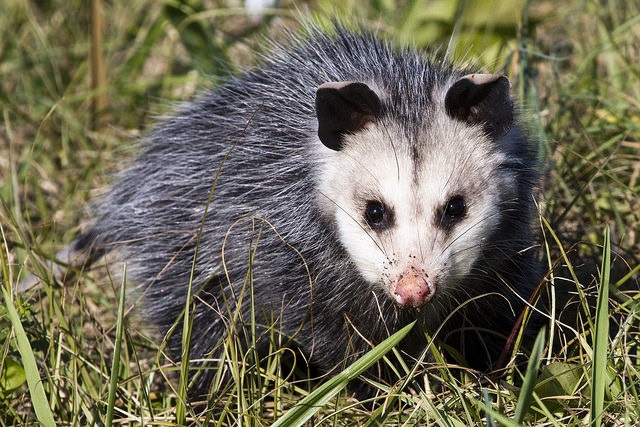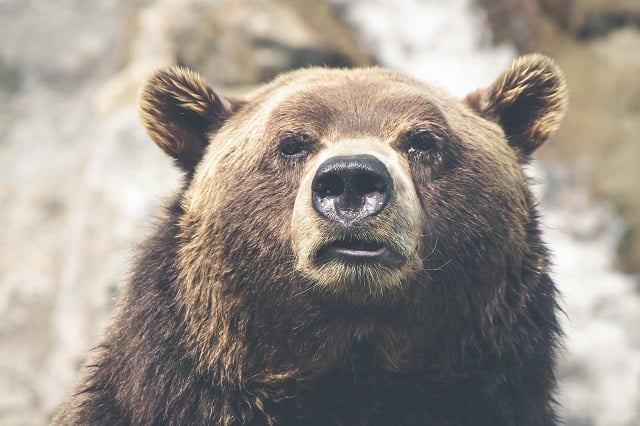I spend a lot of time outdoors surrounded by nature—and from time to time, I come across wildlife that appears to need attention.
We usually instinctively know what to do when we think a human life is in danger, as we have one main number for emergency services—but when it comes to animals, it is a little more complicated.
I have spoken to many others who are not always sure what the best course of action is when we find a creature or animal that seems to be distressed.
Many of us care about animals just as much as we care about humans, therefore, when we see one who requires help or medical assistance, we would like to know what we can do to quickly eliminate their suffering.
Here is a quick guideline of what to do (or what not to do) in times of concern. And, please note, this is just a guide; each circumstance is unique, so I would advise using discernment for each individual case.
The first thing to remember is that wildlife is wild and unpredictable, especially when injured and in pain. Therefore, always proceed with caution, and be aware that you may be scratched or bitten.
Before attempting to handle any animal, observe its behavior for as long as possible. It may initially appear as though it is sick or injured; however, it might just be distressed and acting out of character due to being in close proximity to something it is afraid or wary of—for example, human beings.
When handling any wild animal, always wear protective gloves, as some can have poisonous oils on their skin. Often, it is easier to handle the animal if you cover it in a blanket and then pick it up.
If it is clear that the animal is going to need treatment, then—if possible—capture it before calling a wildlife organization for assistance. A cardboard box lined with a towel or newspaper is often the easiest way to contain an animal; cut out breathing holes for ventilation. Another option is to use a dog or cat carrier. Keep the container in a dark, quiet place that is not too warm or cold, so that the animal remains as calm as possible until help arrives. Also, keep the container away from other pets and young children.
Before capturing, ensure there are not busy roads nearby, as animals have a natural instinct to flee to protect themselves—so they may run into the road, which could cause further trauma.
Also, if you spot an animal at the side of a road, take great care not to put yourself (or others) in danger to reach the animal.
Only ever pick up an animal if you are confident that it is not going to cause you, others, or the animal itself injury. If you are fearful, the animal will likely pick up on your fear and will react accordingly. When unsure, it may be better to call for professional help, rather than trying to move it yourself. If this is the case, then try to keep a close eye on the animal, and wait with it until assistance arrives.
Make a note of where you found the animal—and, if possible, write down the exact location. This will help the animal to relocate its family if it is released back to its natural habitat, and also so that it is returning to an area that feels familiar.
Although it may feel instinctual to feed it, rescue organizations advise not to give the animal food or water unless there are clear signs that it is dehydrated.
Migratory birds are normally protected by federal and state laws. It is illegal to have possession of them or to shoot, trap, or harm any migratory bird. Stiff penalties are imposed for any violations.
If a migratory bird is injured or orphaned, call a registered wildlife organization—and, if recommended, transport it to a licensed rehabilitation center immediately for care.
Many people are aware that it is also illegal to possess an egg from one of these birds without a special federal permit, but what is generally unknown is that it is also illegal to keep possession of one of their feathers. Migratory birds play a vital role in maintaining natural ecosystems, and the laws are there to protect these valuable birds.
It is common for birds to be stunned if they hit a window or wall. In this case, place it in a cardboard box or container, ensuring there is sufficient ventilation, and monitor it for a few hours before releasing it back to the wild. It will usually fly away immediately. If the bird has been attacked by a cat, dog, or other animal call wildlife services for treatment.
Baby rabbits are left alone for long periods of time during the day so that the mother can hunt for food. If you see bunnies, do not disturb them or try to move the nest as it is highly likely the mother will return to take care of them.
If you find an opossum mother, and it is not alive, it is important to check her pouch to see if she has babies. They will usually be attached to her nipples and can be gently removed. Keep them warm and take them to a wildlife sanctuary as soon as possible. If the babies are over seven inches long (not including the tail), and they aren’t injured, they are normally self-sufficient and will not require assistance.

Don’t attempt to care for an opossum by yourself, as it is illegal to do so, and they require expert care.
Does hide their babies in brush or tall grass to keep them protected while they are off feeding, and they’ll return regularly throughout the day to nurse. Fawns appear motionless for long periods of time so that they do not attract attention to themselves, and they also give off little to no odor at this early stage of life, so predators are unlikely to detect their presence.
Fawns are often spotted alone, and many people believe they have been abandoned or orphaned; however, this is mainly because the mother does not visit it often during the day, as it does not want to attract attention to predators. Fawns are also left alone when the mother is foraging for food. The mother (if she is still alive) will return for her baby, although she will not return to it if there are humans nearby. The fawn may appear limp and lifeless, as it will lie still with its ears flat if it suspects that a predator is nearby.
If you are unsure, you can return to the area within a few hours (or even the next day) to check if the mother has come back. If it is obvious that the fawn is injured, or you are sure the mother is dead, immediately call wildlife services.
If a fawn has wandered onto a road, try to goad it back to nearby trees or grass, but interact with it as little as possible. If it tries to call out and follows you, call a local wildlife organization for advice.
In the wild, it is normal for mothers and fathers to leave their young for long periods of time to look for food. Although we may feel uncomfortable leaving a baby alone, we could do more harm than good if we try to remove it from its habitat without being sure of whether or not the parent will return.
Monitoring the situation from a distance or returning to the area after a period of time is highly recommended, unless it is clear that the animal is in immediate danger or injured.
If unsure, err on the side of caution and seek professional advice before interfering with nature.
If you come across a bird or animal that appears to have been shot, or the circumstances seem suspicious (for example, they have been cut open or there are many animals within a small vicinity), always report it to a registered animal organization so that the cause of death can be investigated.
If you find an animal that is caught in a trap or snare, do not try to remove it yourself, as you may cause further injury to the animal—or yourself. Also, although this is distressing, it may be an offence to remove it if the trap is legal. Call a wildlife organization immediately for advice.
If you discover an injured or sick fox, badger, or similar animal, report it to a wildlife organization immediately, as trying to capture it yourself could lead to injury. Make a note of the location you’ve seen it at—and, if possible, ensure someone remains with it while help is being sought.
If you hit an animal with a car, or you see an animal at the side of the road that has been hit—particularly dogs, horses, deer, cattle (cows), pigs, donkeys, mules, sheep, and goats—you must stop where it is safe and immediately report the incident to the police. In many places, this is law.
Ask the police for details of a vet if the animal requires urgent care and attention, or contact a wildlife organization if it is not one of the animals listed above. If you have to drive a little distance before you find a safe place to stop, try to ensure you have taken a mental note of the location of the animal, so that the animal can quickly be located. Whenever possible, if it is safe to do so, remain there with the animal until assistance arrives.
Turtles have slow metabolisms, and their injuries can cause them to suffer for weeks before they die, so always contact an organization that can assist it—and, if necessary, that will alleviate or end its suffering.
While out hiking in the countryside, it may be worthwhile to take a long a penknife or small pair of scissors, just in case you discover an animal caught in netting, fishing wire, or tangled in rope. Only assist the animal if you feel confident that there is no risk of injury; otherwise, contact an organization to seek professional advice.
All animals, however great or small, deserve to be free from pain and suffering. Wild animals deserve the same amount of compassion and care that we would give to our household pets.

If you come across any sick or injured animal that could cause you serious injury—such as bears, wolves, or coyotes—always contact a professional for advice before attempting to assist it.
~
**Disclaimer: Please note, the above is only the guideline that I use while out hiking in the countryside. If in any doubt at all, please do further research and contact professional organizations for further advice. All states and countries have their own guidelines and laws, so also check your local websites for further clarification.
.
>> Click here to find a wildlife rehabilitation center in British Columbia.
>> Please click here for the U.S. Fish & Wildlife Service in the United States.
>> Please click here for the Scottish Wildlife Trust.
>> Please click here for Wildlife Trusts in the U.K.
~
Relephant:
Don’t Feed the Wild Animals or Put Them in Your SUV: 4 Tips for Respecting & Protecting Wildlife.
10 Animal Sanctuaries Around the World Worth Supporting.
~
Author: Alex Myles
Images: Unsplash/Nathan Anderson; Flickr/U.S. Fish and Wildlife Service; Unsplash/Thomas Lefebvre
Editor: Yoli Ramazzina
Copy editor: Travis May
Social editor: Nicole Cameron


 Share on bsky
Share on bsky





Read 0 comments and reply